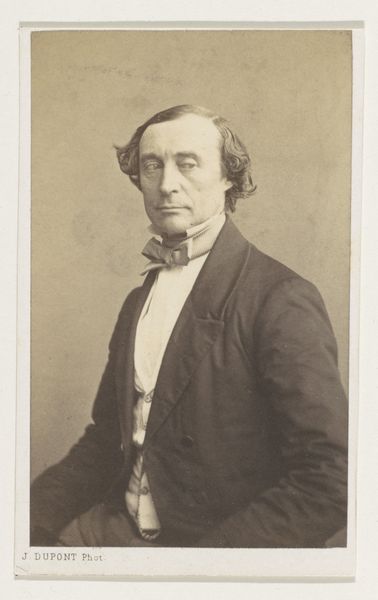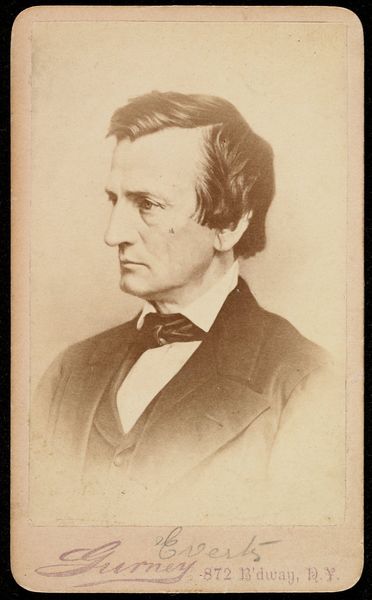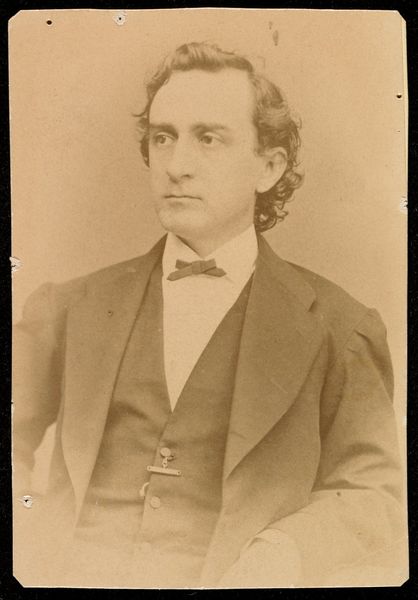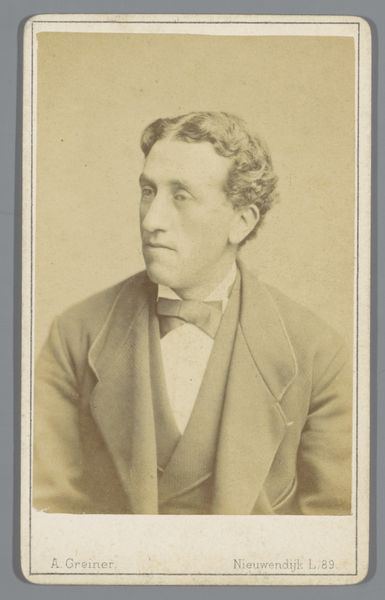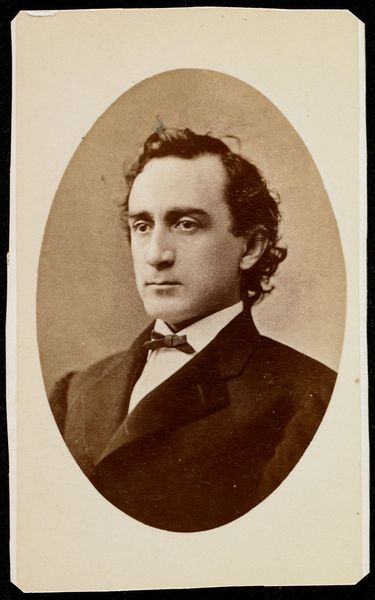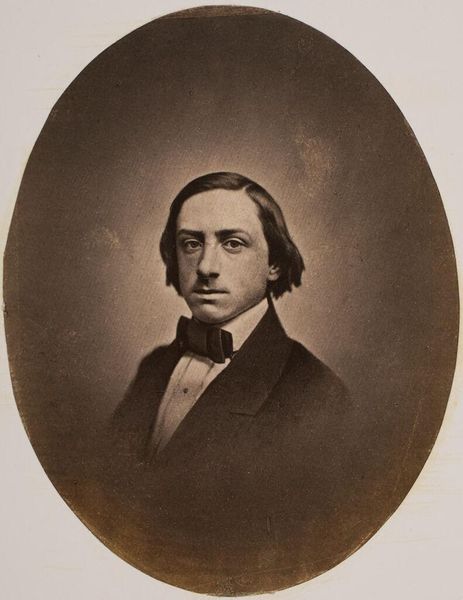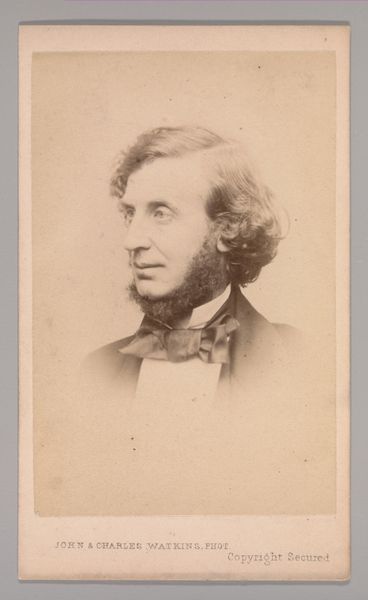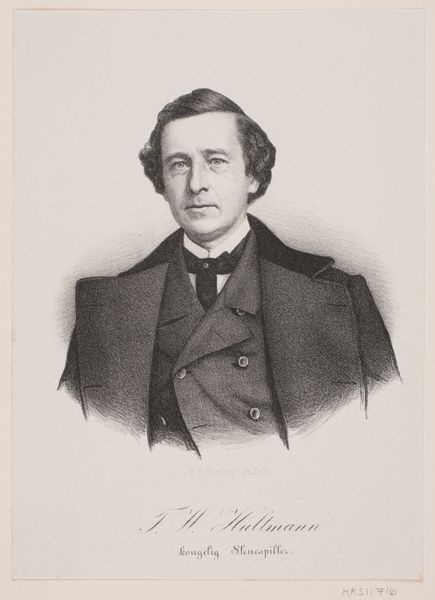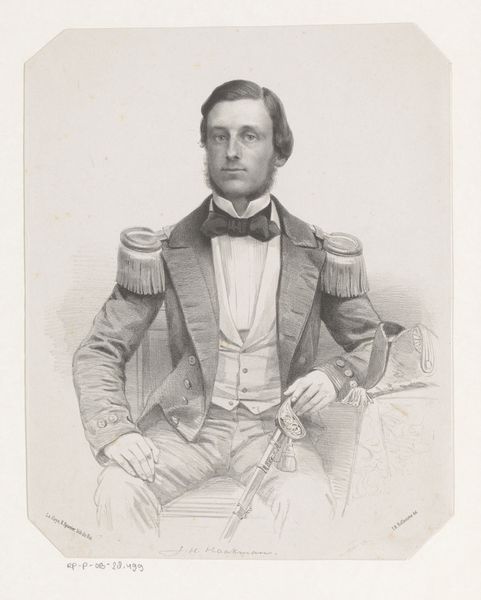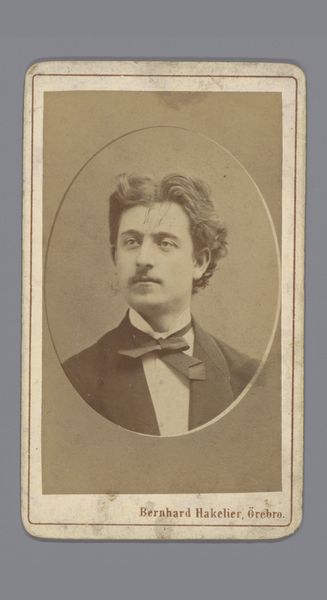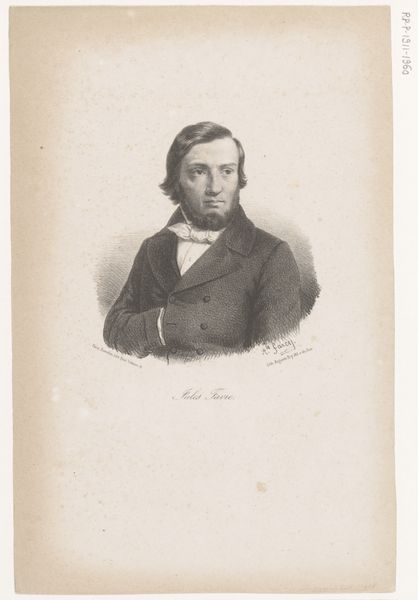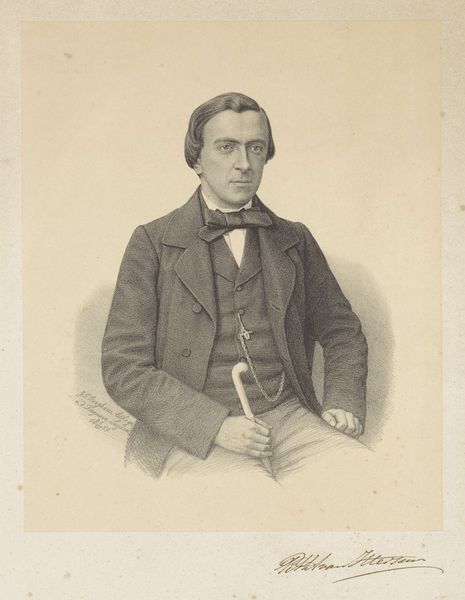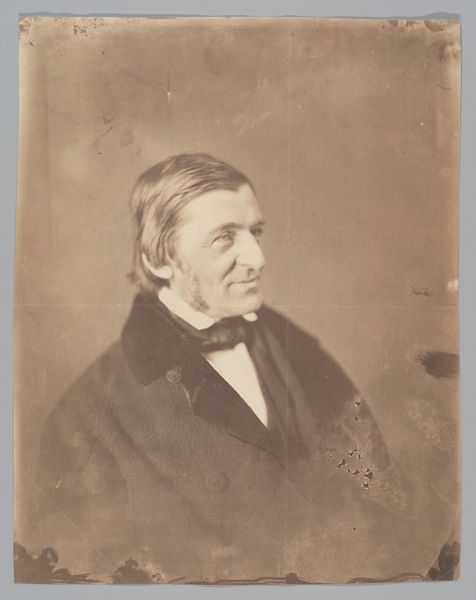
daguerreotype, photography
#
portrait
#
pencil drawn
#
daguerreotype
#
photography
#
united-states
#
portrait drawing
Dimensions: 4 5/8 x 3 9/16 in. (11.75 x 9.05 cm) (image)6 7/16 x 4 13/16 in. (16.35 x 12.22 cm) (mount)
Copyright: Public Domain
Jeremiah Gurney made this portrait of Edwin Booth using the wet collodion process, a popular photographic method of the mid-19th century. Looking at this image, we are invited to consider the role of celebrity and tragedy in shaping the cultural memory of 19th-century America. The photograph captures Booth, the celebrated Shakespearean actor, in a moment of quiet reflection. Made in New York, it presents a figure burdened by fame and family scandal; his brother, John Wilkes Booth, assassinated President Abraham Lincoln in 1865, an event that cast a long shadow over the Booth family. Photography in this period served not only as a means of documentation but also as a tool for constructing public personas. It is clear that this portrait attempts to re-establish a sense of dignity for Booth amidst the turmoil of his personal history. Historical archives, theater reviews, and biographical accounts all provide valuable context in understanding how this image functions within the larger narrative of American cultural and institutional history. They remind us that the meanings we attribute to artworks are always contingent upon the social conditions in which they are created and received.
Comments
No comments
Be the first to comment and join the conversation on the ultimate creative platform.
